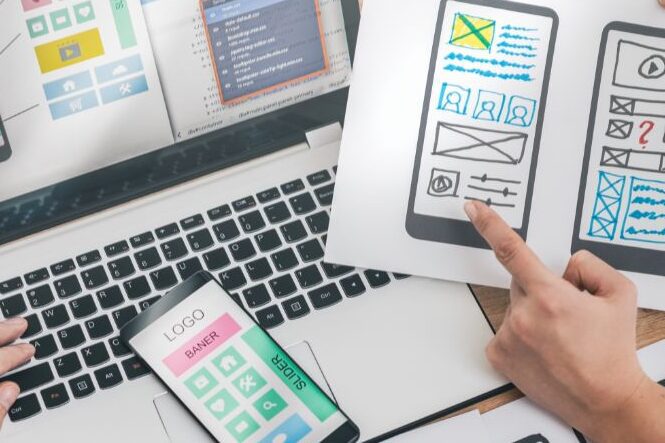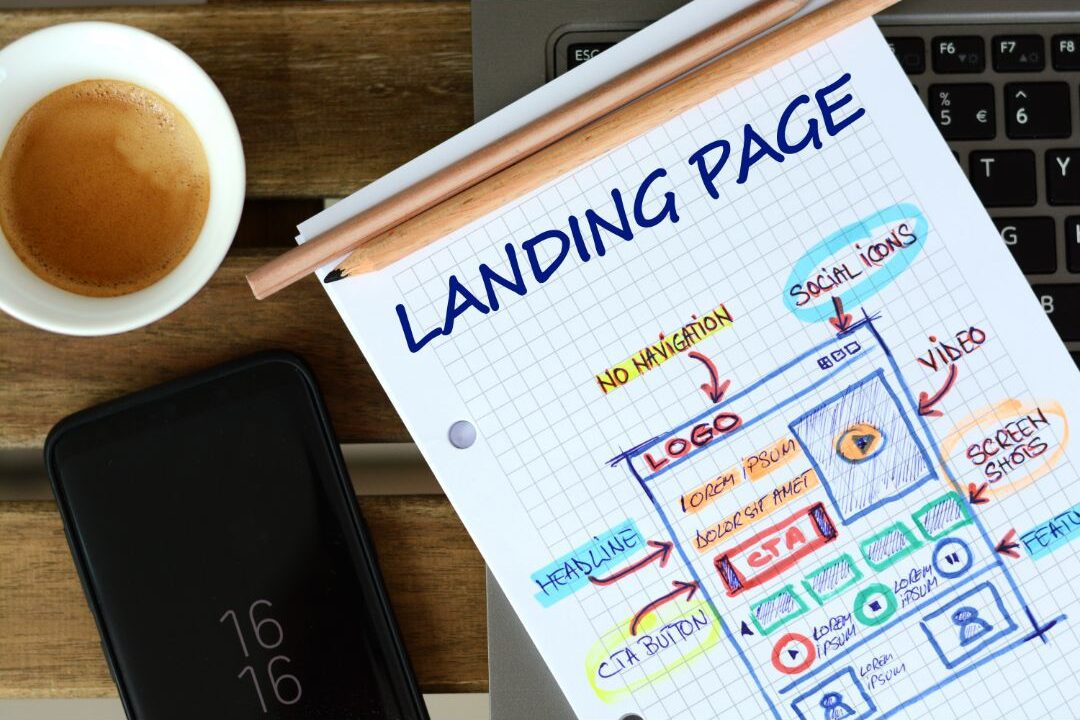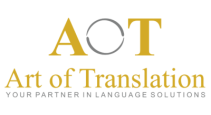Shall I translate my Company Website into X language? Is this question spinning around in your head? This post should then give you a few answers.
First, what is Website Translation? Basically, it is translating the copy of a website into another language. Its goal can be purely informative or more marketing driven. It depends on the objective behind the translation decision.
This leads to the first step: why translate your website? The reason behind the decision will probably drive all the subsequent choices, including the language selection and the how-to. Keep reading to learn more.
So why translate your website?
Many reasons and factors can lead you to translate your company website, such as your industry, geographic market, expansion plans, etc. So, we decided to focus on three main aspects that are commonly the trigger behind translating a company website.
Outreach and SEO
In simple terms, translating your website into a new language is like building a bridge to access a new audience. Targeting new markets is a great way to sustain a company’s growth. You may want to expand your brand reach. Or your company is already doing business in a country using a different language than yours.
In fact, as per PayPal, 57% of online shoppers surveyed are looking beyond their borders. In our new era, geographic limits are no longer a thing. But, if you talk to them in their language, you will surely capture their attention. It’s a fact.
Plus, it’s hard to rank in search engines nowadays. For customers to find you, you need to make yourself visible to them. That works both for B2B and B2C.
If you consider that, among the top 1 million websites, only 9% have an English HREFLANG attribute that tells Google which language is used on their page. It means that buyers searching in English will only get 9% of the top 1 million websites showing up in their search. And it is the largest share of the pie.
If your website is available in more languages, you will increase its visibility in search engines. It will appear when customer search in those languages, leading to more traffic and potentially more customers. Add some SEO work on the top, and you will directly find your dream customers too.
Business expansion and legal requirements
Your company may decide to launch a marketing campaign in a country that speaks a different language or to open new sales points and production facilities. A business expansion can take various forms, but in all cases, it will have a more powerful impact if it can convey its message in the local language.
Your Website Translation is essential for your whole company ecosystem: your clients, employees, suppliers and any other third parties involved. You can’t expect all of them to understand your language. So, your website becomes your online forefront for all your new stakeholders.
Moreover, a business expansion may imply other requirements required by laws from your targeted countries. Your privacy policy or safety data sheets may need to be available in the local language on your website for easy access. Or some documentation on the job portal may need to be translated. It’s always good to check the language requirements when expanding your business.
User experience and competitive edge
Ultimately, your website is your business card online. Most likely your first point of contact with many of your customers. So, if you can speak to them in their language, you are differentiating yourself from the countless brands online.
CSA Research did an in-depth survey on customer experiences from November 2019 to January 2020. They asked 8,709 customers in 29 countries to analyze their experiences in their mother tongue versus a foreign language such as English. Results don’t leave room for interpretation: 76% said they prefer purchasing products with information in their own language.
This study was about B2C, but it was the companion of another survey called “Can’t Read, Won’t Buy – B2B”. The title says it all. Ultimately, even if the buying decision process is different in B2B, the people behind it are also B2C consumers in their daily life.
Since then, COVID happened, and most businesses moved online. Competition got more intense, and online shopping too. But customers’ preferences probably didn’t change, except they have more choices. What are your competitors doing? Maybe they don’t offer this experience yet. To take into consideration…
In all cases, if you can convey your unique selling proposition into your audience or potential audience languages, you will increase your outreach, improve your user experiences, and gain a powerful competitive advantage.

But how to translate your website?
Enhancing your customers user experience will increase your brand awareness, traffic, and conversion rate. But how? Here are the 3 most common approaches to translating a website.
Machine translation
In simple terms, machine translation is when a computer program translates the text automatically. You may already know about Google Translate and the built-in translation tools provided by browsers such as Chrome, Microsoft Edge, and Safari.
Some development companies also offer plugins that you integrate into your website, and they will translate your content. Depending on their sophistication level, they can suggest language based on geolocation, create different versions of your menu, etc.
But even if these solutions seem easy, fast, and cost-effective, keep in mind that they are often inaccurate. Any content mistranslated could be considered misleading, and you could be liable for damages. Plus, they don’t carry all languages.
In terms of user experience, these solutions generally can’t adapt to specific registers and tones or pick up on text nuances and idiomatic expressions. The rendering doesn’t sound as fluent as human translation. And it is not as creative or culturally aware.
Machine translation post-editing (MTPE)
If you’re unfamiliar with the translation industry, you probably didn’t hear about this solution. This approach is basically a hybrid of human and machine translation. The machine provides a first draft, and then a human translator edits it to improve accuracy and style.
Compared to the computer programs mentioned above, these machines are one-step above regarding quality. They learn from the new translation they are producing. It is why they are called neural machine translation.
But, despite the progress made, it’s still inaccurate and doesn’t work for all projects. If your decision to translate your website is marketing-driven or if the content of your website is technical or complex, the human translator may have to do as much work as if they were translating from scratch.
If this solution sounds better and faster than computer translations, it requires you to do a cost-benefit analysis. You can then see if it aligns with what you are looking for. At this stage, a machine cannot pick up context and idioms. You also need to be aware that human translators get generally less paid for this service type.
Human Translation
Finally, human translation. Like all solutions, this one is not the perfect one either. You’ll need to find professional translators who understand the source and target languages and are familiar with your industry and services. A translation agency like AOT can help you with this.
With the appropriate human translators, the translation will be highly accurate. They will understand the context, the site purpose and how to communicate it to users in that target language. They can adapt to specific registers and tones and use their creativity to turn phrases in a way that resonates better with the local audience. Plus, they can adjust the text if you have SEO requirements.
Human translation is generally more expensive and takes more time. But don’t forget that you are handing your online company forefront to professionals who have studied, and now master their craft. It must be considered an investment that may have an even higher ROI than expected. Your website performance in your target language cannot be understated.
Also, when considering which approach to use for translating your website, don’t forget the time you and your team spent building it in the source language. A human translator will generally give the same care when machines do not (or do not yet).
Translation vs localization!
The translation process aims to transpose written content from one language to another. To convey your message in another language to build bridges with new audiences.
Localization is a much larger process that goes beyond transposing written text. It looks at design, functionalities, technical considerations such as domain names, and local expectations that may require product adaptations, etc.

Then, How to start translating your website?
Translating a website is a whole project on its own. We would suggest approaching it with the famous 5 W and one H analysis to draft your plan and define the services you’ll need to support you and your company. We reorganize the order to provide you with our own recipe.
Why?
As we saw above, you may have multiple reasons for translating your website into one or multiple languages.
You may want to expand your brand reach, or you saw from your website data that your brand is getting popularity abroad. Your company may target new markets in its global strategy. Or it may be because of legal and operational constraints that your business cannot avoid anymore.
Fun fact: As per a study from CSA Research in 2018, it takes almost 52 languages to reach most of the global audience. We understand that translating all your existing content may be daunting. That’s why defining your “why” will help you boost the process.
Who?
If you know why, then you probably know who. Therefore, you can define which languages your audiences speak. And you can refine the scope of your project. The data related to the traffic on your website will be a good tool here to support you in this process.
Your audience can be any of your company stakeholders: your clients, employees, vendors, partners, government officials, etc. Similar to what you would have in your home-based country unless you’re targeting a brand-new market segment.
For example, your company is based in the US and its website is in English. You want to increase your outreach and improve your user experience. Spanish is the second most spoken language in the US. Translating your website into Spanish may help you reach the audience performing searches in Spanish on the Internet and boost your conversion rate in your local market.
Where?
Where your audience is and where you’re located are factors to consider too.
Let’s take the example of the company above. You decided to translate your website into Spanish. Now, there are more than 257 million Internet users in the world. Do you want to reach specifically Spanish based in the US? Or do you want to take this opportunity to speak to all the Spanish users in the world? It’s important to give context to your translators as some local references may not work on the international stage.
But your audience may be internal, too. Let’s say you’re opening production facilities in Brazil. In order to optimize your efficiency, all your intranet and HR systems must be translated into Brazilian Portuguese to run your operations smoothly. You will then need a human translator aware of the Brazilian culture and specificities to translate your website accurately.
What?
The next step is deciding what you want to translate. You probably have a lot of pages of existing content, from your product and services pages to blog posts and FAQs.
Are you launching a specific campaign? Or do you want to make your whole website available to your target audience? Maybe, you must comply with some legal requirements too.
Then, again, your “why” will help refine the scope. Translation agencies can support you in this process too. They have experience managing this type of project and can provide you with the expertise of their translators’ team.
When?
Timing can play a decisive role in the selected approach and the final cost.
Are you planning to deploy the website translated gradually? Or do you need to have it translated for a specific campaign? Or for a specific event? Such as Christmas or Chinese New Year?
When you set your project deadlines, keep in mind that translating your website is an investment into the future of your website performance. So, you may want to give yourself all possible chances to reach your target by allowing the time necessary to get the quality and the expertise.
A translation agency can help you define a deadline based on their expertise and experience. It may require a few rounds of revision, depending on the complexity and the volume. Your website is your digital forefront, so we want it perfect!
How?
The last, but not least, question you want to consider. We walked you through 3 approaches, but we believe that human translation is always the most faithful to your source content and the most effective to reach your stakeholders, as they are human too.
There are different logistical methods to translate your content. The simplest one is to copy-paste your original content to share it with the translator and copy-paste the translation on your website. You can also use Word extraction when your website has many sub-pages or animated content. However, it is better to have a Webmaster with the required knowledge.
The most efficient one is dynamic content-based translation. Translators can visualize the website as they translate. Therefore, they can adjust things such as word counts for CTA. Plus, translations are saved in a cloud. But this method can be expensive.
The best is to find a middle point between your budget and the quality required. Rates can vary based on complexity, volume, languages and more. We recommend contacting a translation agency that can guide you through these steps and support you with different languages.
AOT
AOT is a boutique translation agency. We want to create strong relationships with our clients to serve you better as your prime partner in language services. We take pride in providing an exceptional level of service, quality, and professionalism because we want to help you reach your goals. Contact us for your website translation. We will guide you every step of the way.
References
https://www.motionpoint.com/blog/10-great-reasons-to-translate-your-website/
https://www.paypal.com/in/webapps/mpp/campaigns/cross-border-ecommerce-trends
https://trends.builtwith.com/language
https://travod.com/blog/5-methods-translate-website
https://www.smartling.com/resources/101/the-3-top-ways-to-translate-a-website-pros-and-cons/
